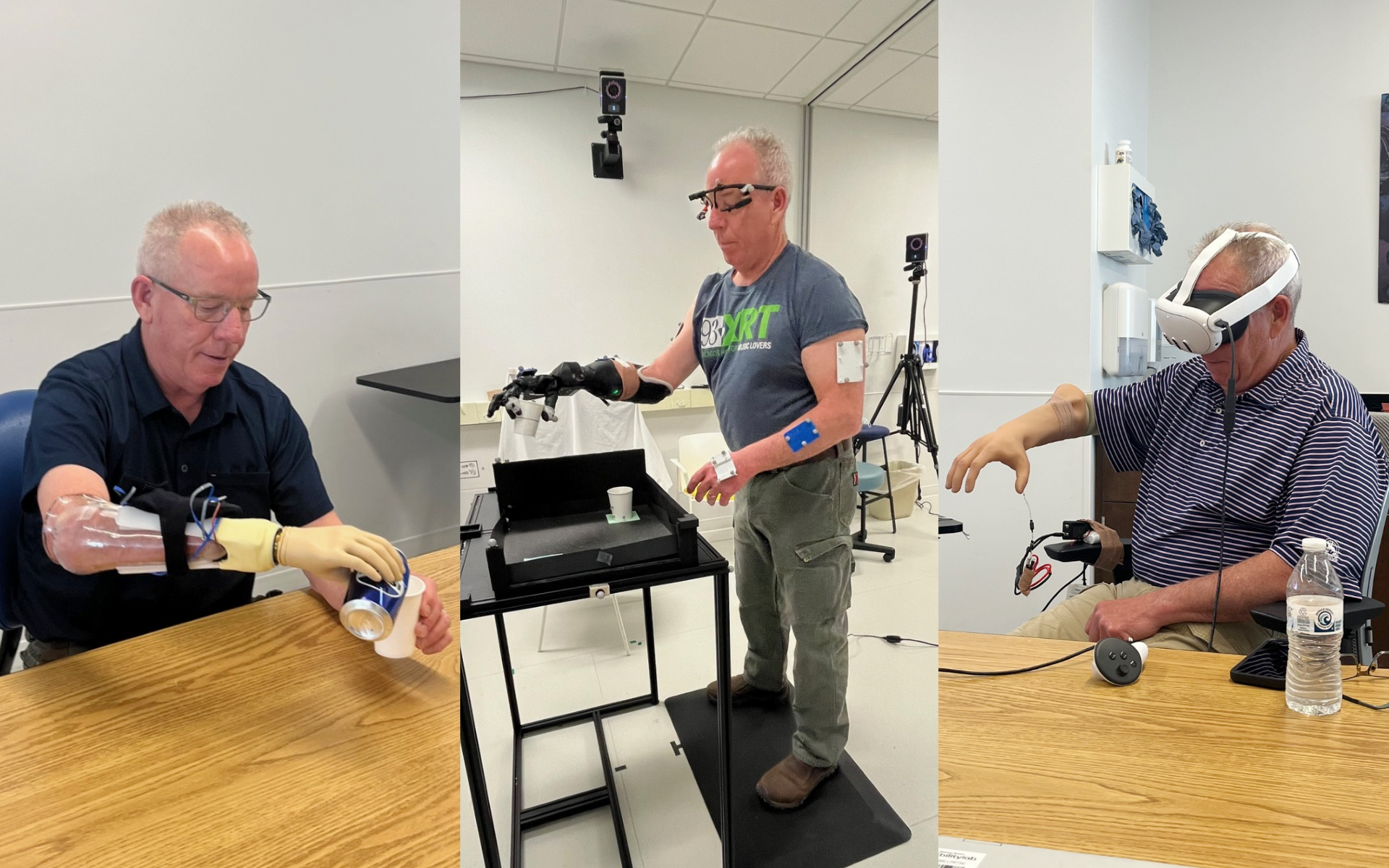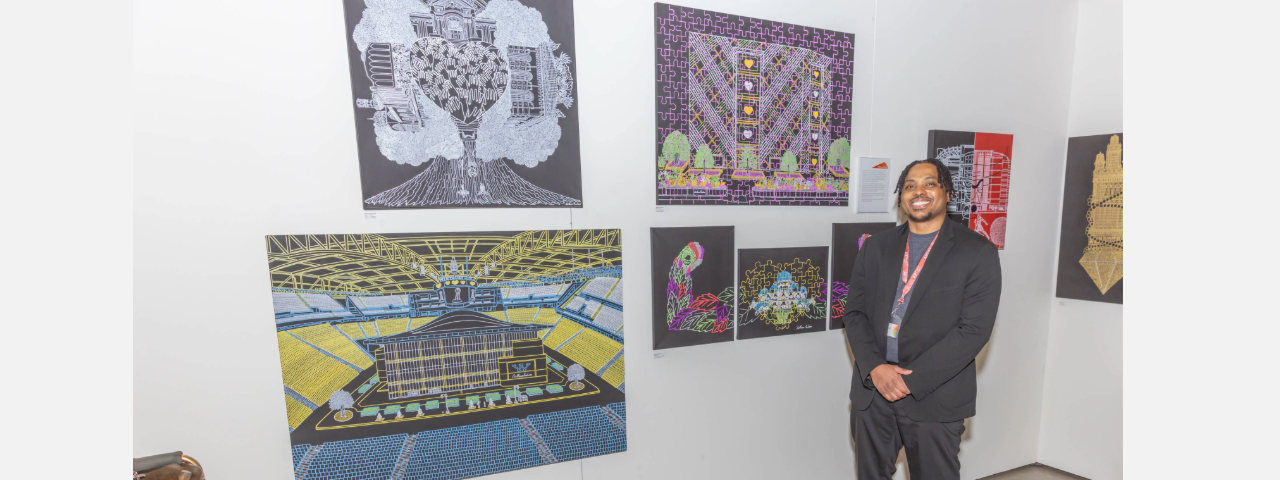Body
Marty N., 61, was among more than 50 golfers to participate in the inaugural Chicago Adaptive Open. The tournament, sponsored by the Chicago District Golf Association (CDGA), featured top golfers — including Marty — with arm, lower-limb, visual or other impairments.
Marty, an active Shirley Ryan AbilityLab research participant, experienced limb loss at age 15 when he lost his right hand in an accident. As an avid golfer of 40 years, he has played using only his left arm to swing his golf club. Recently, he achieved a major personal milestone: making his first-ever hole in one.

Despite his years of golf experience, Marty had never participated in an adaptive sports event or competition. However, when he learned about the Chicago Adaptive Open, he signed up right away and invited his older brother and his two sons to be his caddies.
Rising Interest in Adaptive Golf
Body
Adaptive golf is gaining momentum across the country. There are more than 5.7 million adaptive golfers in the United States, according to the National Golf Foundation.
Also, the U.S. Golf Association (USGA) introduced the first national championship for adaptive golf, the U.S. Adaptive Open, in 2022. In fact, the USGA turned to an interdisciplinary team at Shirley Ryan AbilityLab to help develop guidelines and eligibility assessments that would enable golfers with impairments to receive world-ranking points at national tournaments.
In a Daily Herald article published in the lead up to the first-ever Chicago Adaptive Open, Marty was humble about his golf game — and shared his excitement about meeting other golfers in the local tournament.
“I’m just a regular guy, an average golfer who — on a good day — can shoot in the high 80s or low 90s,’’ said Marty in the article. “It’ll be so cool to meet someone who is good at golf who has a disability like mine.”
Shirley Ryan AbilityLab Pride at the Chicago Adaptive Open
Body
During the Chicago Adaptive Open, Marty wore a Shirley Ryan AbilityLab golf polo to show his spirit and continued support of the hospital where he participates in research.
The College Golf Network livestreamed parts of the tournament, including the moment when Marty sank a putt on the final hole and fist-bumped his golf partners to celebrate his finish. Marty came in fourth place in the Men’s Arm Impairment – Unassisted category.

In a post-game interview on the College Golf Network, Marty said he is looking forward to participating in more adaptive golf tournaments like the Chicago Adaptive Open.
“I’m a research subject at Shirley Ryan AbilityLab, but I have not worked with them on any adaptive golf,” said Marty. “After seeing the adaptive golf program they have started — and seeing what CDGA is doing here — I signed up for the tournament right away.”
“If this is how all adaptive events go, I can’t wait to participate in more,” he said.
Advancing Science Through Research and Looking Ahead
Body
Marty was first a patient at Shirley Ryan AbilityLab, then the Rehabilitation Institute of Chicago (RIC), in 1979 following his accident. At that time, he was evaluated for practical use of a prosthetic device. He returned as a patient once again in 2015, and since 2016, Marty has participated in research projects in the Regenstein Foundation Center for Bionic Medicine (CBM) at Shirley Ryan AbilityLab. His willingness to help has had a significant impact on prosthetics research.
He has tried various prosthetic components and control systems designed by CBM, including a low-cost body-powered hand and socket system and a myoelectric wrist flexor and rotator hand system. He also has worked with students and residents studying Prosthetics & Orthotics.
Moving forward, Marty sees even greater opportunity for engagement. In addition to striving to improve his golf game and staying active in the sport, Marty also plans to continue his participation in research.
“Over the years, I’ve learned to adapt and never give up,” said Marty. “I will continue to participate in research projects at Shirley Ryan AbilityLab — paying it forward as they develop upper-limb prosthetics for others with amputation and limb loss.”


